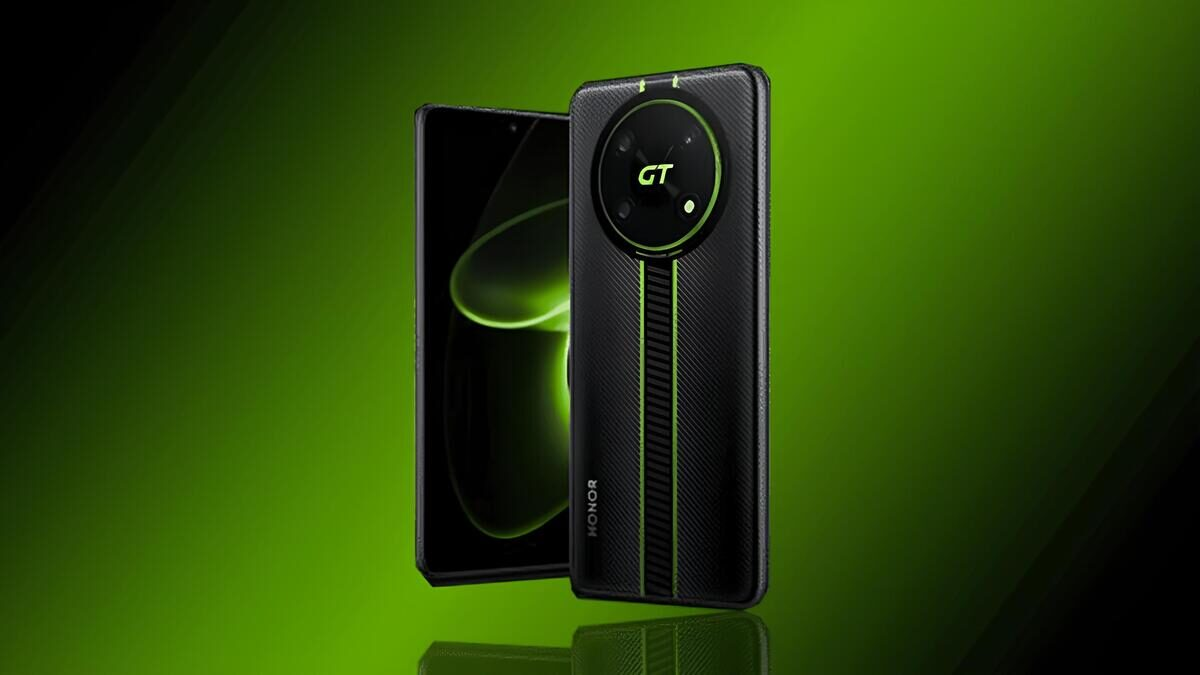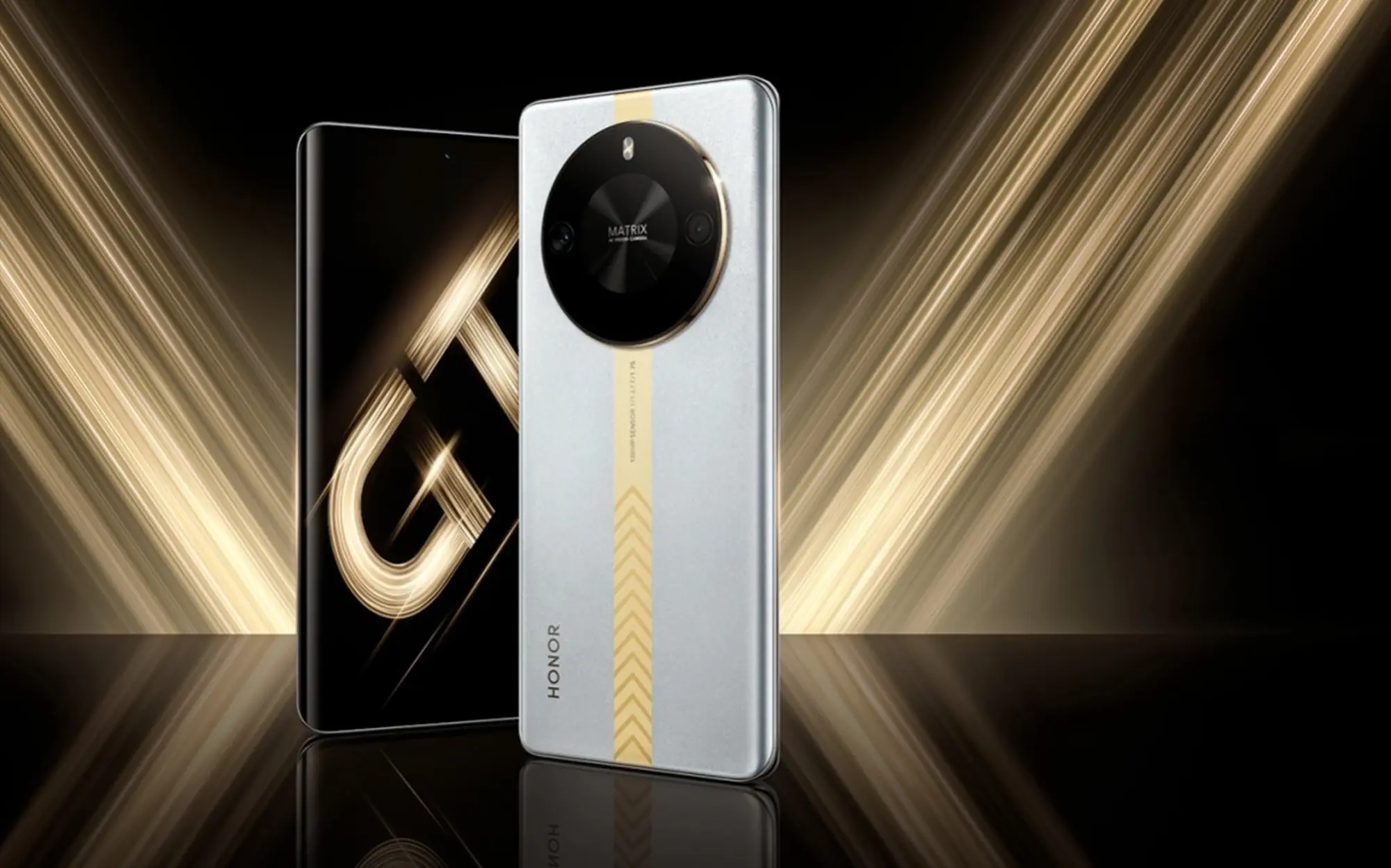Honor GT series independence! Directly compete with Redmi, fully strengthening the online market?
![]() 11/01 2024
11/01 2024
![]() 382
382
On October 30, Honor held a new product launch event for the Magic7 series flagship at the Shenzhen International Convention and Exhibition Center, officially unveiling the Magic7 and Magic7 Pro flagship smartphones. This event also coincided with a special milestone – the fourth anniversary of New Honor.
Therefore, towards the end of the event, Honor invited Wong Ka Kui, the former lead guitarist of the Beyond band, to perform the theme song of New Honor, "Boundless Sky". Besides the song as a gift, Honor also brought another surprise to fans: the first product of the new Honor GT series will be released within the year.

(Source: Honor)
The new Honor GT series is positioned as a "new performance technology series that understands young people better." It differs from the previous digital series performance editions, fully integrating avant-garde design with robust performance to create more distinctive new models. More importantly, the Honor GT series will be its first work to return to its internet attributes.
Emphasizing performance, Honor GT is unwilling to be just a minor upgrade
Honor's first GT smartphone dates back to 2022, when it launched the X40 GT to showcase its tuning capabilities in heat dissipation, performance, and frame stability. The Honor X40 GT is equipped with the Snapdragon 888 flagship SoC, a chip whose reputation only turned around after the launch of this model.
As a result, many consumers have praised the Honor GT series as "dragon tamers."

(Source: Honor)
After the Honor X40 GT, Honor capitalized on its success and launched the Honor 80 GT at the end of 2022, the first performance model in the digital series. Compared to the Honor X40 GT, the Honor 80 GT combines the fashionable design of the digital series, such as curved borders and micrometer-level star engraving.
At this point, GT mostly served as a performance upgrade across different Honor series models. Those familiar with the sports car or console markets are not unfamiliar with such positioning. The advantage of this approach is that it allows consumers to easily understand the different product positions within the same series, enabling them to make purchases based on their needs.
However, as the positioning of the X series and digital series changed, the GT suffix for performance upgrades became quite jarring. For example, the Honor X50 emphasizes durability, while the X50 GT is a full-frame warrior with an ultra-large VC heat dissipation system. Having such vastly different products within the same series creates a blurred positioning.
Therefore, the GT models of the Honor digital series stagnated at the 90 series, and subsequent Honor 100 and 200 series did not introduce GT performance upgrades.

(Source: Honor)
In addition to changes in product positioning making performance upgrades no longer suitable, Honor also seems to need an online product to boost brand influence. Since its establishment, New Honor has placed more emphasis on offline market operations. Whether it's the flagship-oriented Magic series or the premium-focused digital series, they have low online discussion but are well-loved by offline consumers. A 2021 data report mentioned that through the launch of the Magic3 series, Honor's offline market share surged by 14.6%, with sales in experience stores growing by over 70%.
As smartphone manufacturers return to the online market, such as OnePlus returning to internet channels after the establishment of BBK Electronics, launching models like the Ace and Ace Pro to capture the market; sub-brands like Redmi and iQOO have sparked heated discussions with their K series and Neo series, respectively, leaving Honor nearly powerless in this vast public opinion field.
However, this is understandable. The offline market has always been an advantage for Honor. When New Honor was first established, the brand was in a transitional phase requiring reorganization. Sticking to its strengths and targeting the flagship market was the right path. Zhao Ming, CEO of Honor, also stated that Honor now has sufficient technological reserves and it's time to return to the internet market, where it is most familiar.
Directly competing with Redmi, Honor's new GT series is here
Over the past few years, the Honor GT series has been presented as a suffix, such as the X40 GT and X50 GT, which are models that combine cost-effectiveness with performance; or the Honor 90 GT, which combines the fashionable design of the digital series with much more robust performance.
It's not hard to see that for Honor, performance is always the top priority for GT.
But honestly, presenting the GT series as a suffix is very detrimental to branding and product image. For example, the general public's impression of the digital series has always been fashionable, sleek products with outstanding portrait photography, but the Honor 90 GT is a "performance warrior" equipped with the second-generation Snapdragon 8 flagship mobile platform. Conflicting concepts and positioning often make it difficult to distinguish between products.
The new Honor GT series will meet the public with a new image, combining avant-garde design while retaining the GT series' traditional performance-first characteristics. Regarding this new series, Zhao Ming, CEO of Honor, also bluntly stated that he hopes the product managers of the GT series and digital series will "compete" to create good products through mutual rivalry.

(Source: Honor)
In fact, it's not just Honor that is re-evaluating the positioning of its products; its rival Redmi has also just completed a new brand positioning for its sub-series. For example, Redmi also recently independently launched the Turbo series, which was previously hidden in the Note series suffix, unveiling the first Turbo series model, the Redmi Turbo 3 this year, thereby establishing the market level for each sub-series within the brand matrix.
We can also understand Honor's new GT series as the relationship between Huawei and old Honor, that is, injecting new vitality into the online market by Lower down flagship technology, increasing product market share, and reaching a broader consumer base. Meanwhile, the new GT series may also become an independent sub-brand in the future, similar to the relationship between Xiaomi and Redmi.
Of course, unlike Redmi, which aims to cover a vast consumer base, Honor openly admits that the new GT series is specifically designed to serve young consumers. Therefore, for this series, Honor will generously Lower down flagship technology while maintaining cost-effectiveness, giving consumers more options.
Returning to the online market, what advantages does the new Honor GT have?
In a group interview after the Magic7 series launch event, the CEO of Honor responded to why they chose this time to reshape the Honor GT series. The reason is simple: today's Honor has sufficient technology and innovation to support the launch of the new series. This means that the new GT series will compete with competitors not only on cost-effectiveness and performance but also on innovation.
In the four years since New Honor was established, it has gradually formed its unique technological barriers.
First, Honor focuses on eye care technology, driving the development of eye care technology in the smartphone industry. For example, in the recently launched Magic7 series, Honor pioneered the use of an AI eye care model combined with hardware-level circularly polarized light technology to achieve all-weather, all-angle eye care. Additionally, Honor established the Oasis Eye Care Lab early on, employing a professional team to develop screen eye care solutions.
These flagship technologies have also been implemented in lower-end models, such as the Honor 200 series and Honor X60 series, which utilize industry-leading eye care technologies and dimming strategies.
Secondly, Honor's MagicOS 9.0 is currently the only mobile operating system capable of L3-level AI intelligent task decision-making. I'm sure you've recently seen news of Ming Ge using YOYO Intelligence to order 2,000 cups of Luckin coffee at the launch event, which is just the tip of the iceberg of MagicOS 9.0's many AI features. Given the GT series' performance-oriented positioning, we may see MagicOS 9.0's gaming large model technology in this series.

(Source: Honor)
Finally, and most importantly: imaging. In reality, many mid-range phones do not prioritize imaging configurations, as most consumers expect these products to be smooth and user-friendly. Although Honor has not chosen to collaborate with imaging brands like other brands, its Eagle Eye capture technology has gradually matured over the years. Moreover, Honor was the first to highlight the importance of capture in mobile imaging, which was validated by the market this year. The launch events for this batch of flagship new models almost universally emphasized capture as a key selling point.
Honor's technological advantages are actually not the focus of current performance-oriented models, creating significant room for development for the new GT series. If the new GT series can simultaneously prioritize eye care, AI, imaging, and extreme performance, its arrival will bring tremendous pressure on competitors.

(Source: Honor)
However, looking back at the mid-range phone market in 2024, from performance and imaging to durability and long battery life, consumer demands have already reached their limits, and competition is fierce. Whether Honor can successfully return to the online market through the new GT series and attract the attention of young consumers will ultimately depend on the performance of the first model released by the end of the year.
Source: Lei Technology






